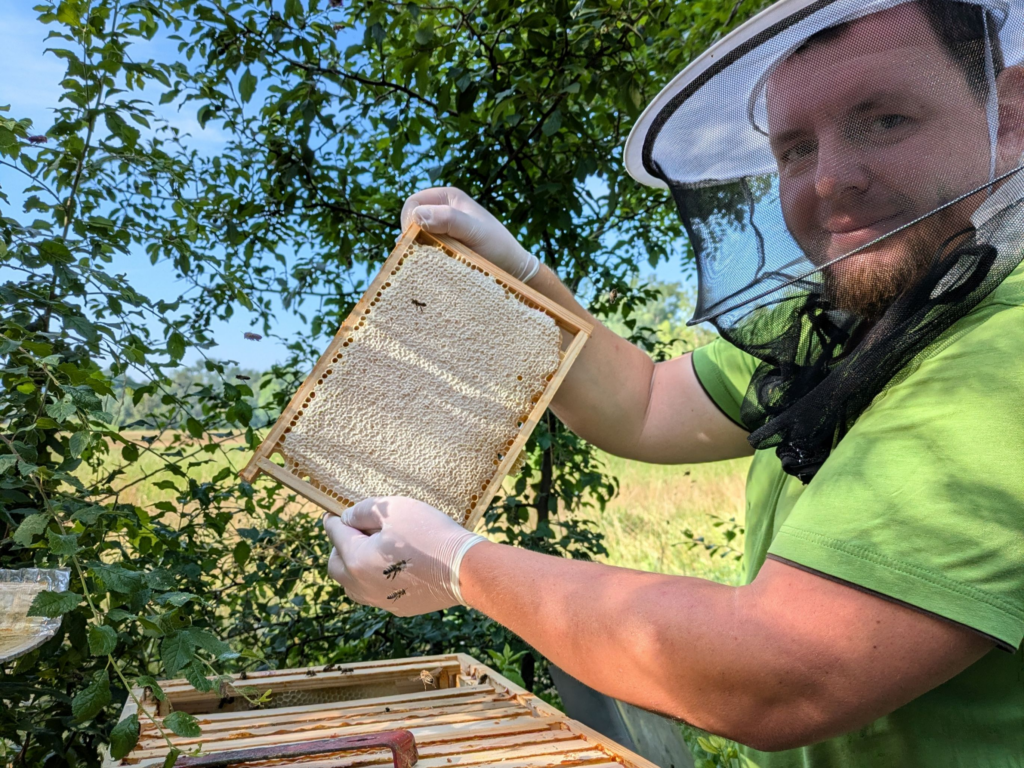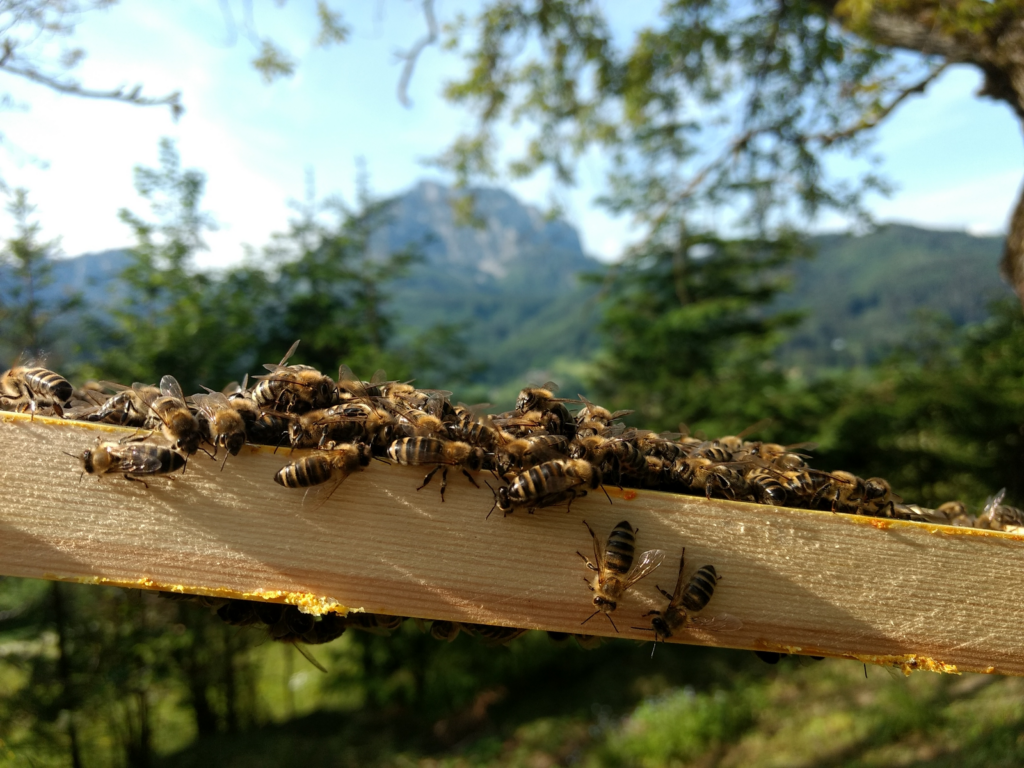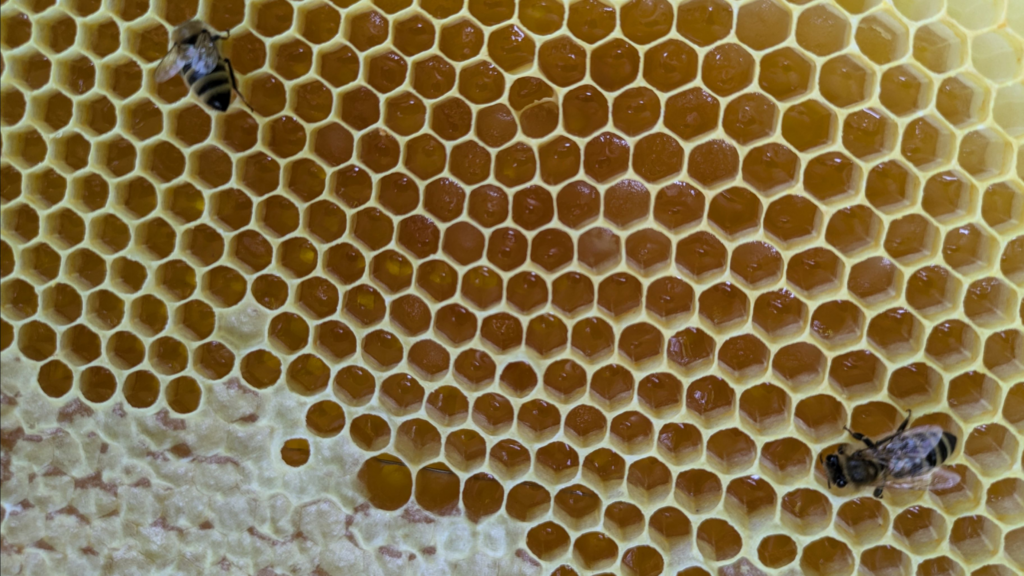Dear bee and honey lovers,
as this year’s honey harvest is exceptional in many respects and we will need a plan B, we would like to keep you up to date!
Best regards Michael and Richard

We started our 2024 honey harvest in mid-July! At the end of the bee year, it is the best bonus and sweetest reward for our work with the bees. The conditions for this were quite good: our bees had a particularly strong winter this year, which allowed them to develop quickly and build up larger honey reserves than in previous years.
We noticed weeks ago at individual locations that the bees were also finding a special forest honey: The so-called “melezitose honey”. At that time, however, we had no idea how big a challenge this would be for us.
NATURAL PHENOMENON: MELEZITOSIS

Every 10-15 years, a natural phenomenon occurs in the forest in our region: the large black spruce bark louse – a distant relative of garden aphids – multiplies en masse. It taps into the spruce sap and produces large quantities of honeydew (up to 800 kilos per spruce!), which is a feast for ants, bees and wasps. Their honeydew – known as melezitose – is particularly popular because it is a triple sugar.
Bees cannot resist this honeydew: They are willing to travel unusually long distances and fly up to 10 kilometers to collect it. By comparison, their normal collection radius is around 3 kilometers. Once forager bees have discovered melezitosis, they do not deviate from it.
The big catch: Melezitose crystallizes immediately in the combs – and can only be liquefied again with great effort for the bees. Specifically, you need 20 parts water to dissolve 1 part honey. In comparison: fructose needs approx. 1.25 parts water for 1 part honey.
At this point, it quickly becomes clear why large quantities of this forest honey become a threat to bees in winter: It takes extra energy to collect water and if it is too cold to collect, they can no longer eat and die of starvation. At the same time, studies show that the quality of the bees’ forage juice decreases when they consume triple sugars. Your offspring are therefore less fit.
CONSEQUENCES FOR BEEKEEPING: OUR PLAN B

For beekeepers, this means that they cannot extract the crystallized honey – and we certainly cannot drain it as usual. This is why melezitose is also colloquially known as “solid honey” or even “concrete honey”.
The good news at this point: there are also a few apiaries where the bees have not (yet) found any melezitosis honeydew. That means: In any case, we will be able to harvest drip honey again this year. However, as there are large quantities of melezitose honey on the Hongar and along the Vöckla, we will unfortunately have to do without the popular Hongar and Vöckla honeys in 2024.
Instead, this year we will harvest the melezitose honey as forest honey. This is possible with the help of a special device that we purchased years ago for precisely this purpose. The honey can usually convince with its intense forest flavors, we are already excited!
For now, we hope that our bees will consume the melezitose honey until the fall or use the time when they can get enough water to liquefy. In our case, we are talking about around 10-15 kg of honey per colony left in the hive after the harvest. And we certainly hope that there won’t be a second wave of melezitosis honey in the fall. Our fingers are crossed!